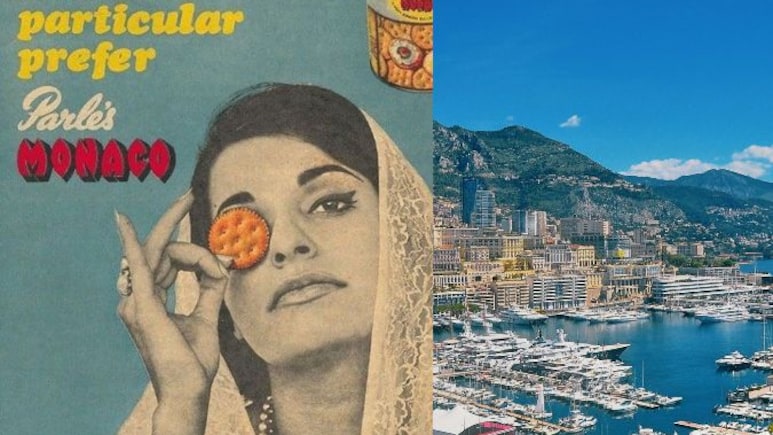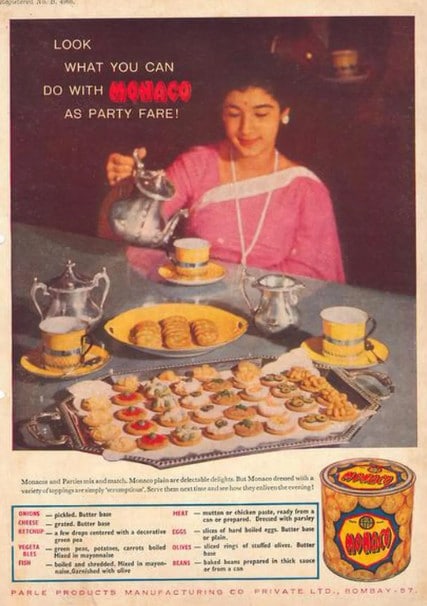
A social media user recently confessed that well into their 20s, they believed Monaco biscuits were named after the glamorous country on the French Riviera. They are not alone.
Most of us grew up believing Monaco biscuits had something to do with Europe's glamorous Riviera. After all, the name sounded fancy enough to belong to yachts, casinos and sunshine holidays.
Well into my 20's I thought these delightful salted biscuits were named after a country on the French Riviera. Only to discover that two brothers Mohanlal and Nathalal conjoined their names, added Co for company and Monaco was born in 1942 in Vile Parlé, as far from the… pic.twitter.com/VKnlPmn3ic
— Tara Deshpande (@Tara_Deshpande) August 21, 2025
But the truth is delightfully desi. Monaco was born not in the Mediterranean, but in Vile Parle, Mumbai, back in 1942. Crafted by two brothers who simply fused their names, Mohanlal and Nathalal, and added a "Co" for company.
MoNaCompany
At launch, Parle didn't launch Monaco as the "common man's snack" it would later become. Back then, it came in shiny tins and foil packs, positioned as an elite offering. As Mayank Shah, category head at Parle, recalls to the Hindu, "The historic communication was targeted at affluent housewives and kitty parties. It was more about offering an option as there was no other salted cracker in the market. We positioned it as a snack that you could not only have on its own, but was also a great accompaniment with tea and could be had with toppings."
Independence changed everything. With people stepping out to work and rushing between offices and trains, there was a growing need for something light, portable and filling. By the 1950s, Monaco had reinvented itself as a convenience snack - easy to carry, able to keep hunger at bay, and perfectly suited to India's changing pace of life. In an era when savoury snacks were still either homemade or found at Kirana shops, Monaco stood out.

By the 1960s, it had shed its elite image and become a snack for all. The red-and-yellow pack made its way into school tiffin boxes, office bags and of course, party trays.
For decades, Monaco canapes defined middle-class entertaining: one salted cracker, topped with a cube of cheese, maybe a slice of cucumber, and that final dot of ketchup. The neat geometry and salty crunch gave gatherings a touch of glamour, long before bruschetta or nachos made their way in.
Today, Monaco holds a quarter of the Rs 1,900-crore salted biscuit industry in India, and it is more than a biscuit. It is an edible canvas, versatile enough to be eaten plain with chai or dressed up like the star of a buffet table.
The nostalgia attached to that red-and-yellow packet runs deep across generations.
Fun Fact: The Nice biscuit actually began as a coconut cookie named after Nice, France, created by Huntley and Palmers in 1894. By 1900, the company had become the world's largest biscuit producer and registered “Nice” as a trademark in 1904, before later being acquired by Nabisco.
😂😂😂 Nice was originally a coconut biscuit actually named after a place Nice France produced by Huntley Palmer in 1894 who by 1900 became the world's largest biscuit producers. They trademarked Nice in 1904. Bought over by Nabisco later. The coconut flavoured Nice biscuits you… https://t.co/o6GcdsxWKc pic.twitter.com/JNN9sZPDPs
— Tara Deshpande (@Tara_Deshpande) August 22, 2025
The Reinventions
Even today, Monaco continues to inspire reinventions. That same social media user who sparked nostalgia suggested crushing the biscuits and sprinkling them over macaroni and cheese as a substitute for breadcrumbs. The buttery-salty topping, they claimed, takes the comfort food to another level.
So while the name may nod to European luxury, Monaco's real story is firmly rooted in India. From tins on elite tables in 1942 to snack boxes across the country today, it remains an edible piece of history - nostalgic, versatile and unmistakably desi.
Track Latest News Live on NDTV.com and get news updates from India and around the world

